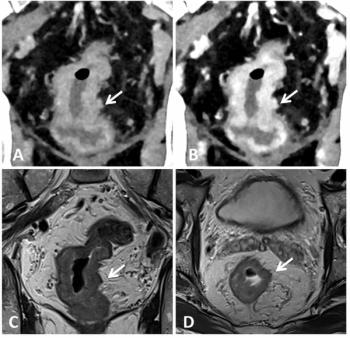
Danish study finds novel solution to problems in high-field MRI of brain
The use of sensitivity encoding and a gradient echo sequence in dynamic susceptibility contrast (DSC) perfusion imaging at 3T leads to fewer artifacts and better diagnostic quality, according to award-winning research from Denmark.
The use of sensitivity encoding and a gradient echo sequence in dynamic susceptibility contrast (DSC) perfusion imaging at 3T leads to fewer artifacts and better diagnostic quality, according to award-winning research from Denmark.
DSC perfusion examinations at 3T are associated with pronounced artifacts close to tissue/bone and tissue/air interfaces, which mean that parts of the brain cannot be evaluated properly. Clinicians and researchers are reluctant to use this technique in conditions where these areas play an important role, such as Alzheimer's disease, stroke, epilepsy, and brain tumor.
To optimize DSC imaging at 3T, Anne Dorte Blankholm, a radiographer at the MR Centre in Aarhus University Hospital, Skejby, performed examinations on 12 healthy volunteers using a GE Signa HD machine. She presented details about her study in a special exhibition at the ISMRM-ESMRMB meeting organized by the Society of MR Technologists.
Six of the volunteers had a standard gradient echo (GRE) echo-planar imaging (EPI) perfusion sequence and a GRE EPI perfusion sequence during which the parallel imaging technique sensitivity encoding (SENSE/ASSET) was used. The other six had a GRE EPI perfusion examination and a spin echo (SE) EPI sequence.
An injection of Gadovist (gadobutrol, 604.72 mg/ml, 1 mmol/ml, Schering) was given in an antecubital vein. The first group of volunteers had an injection of 0.1 mmol/kg of body weight for each of the GRE sequences. The second group had 0.1 mmol/kg of body weight for the GRE sequence and 0.2 mmol/kg of body weight for the SE sequence.
The size of susceptibility artifacts was evaluated by measuring the area of visible brain for each sequence. On a GE Advanced Windows workstation, readers indicated by hand the area of visible brain, not including the susceptibility artifacts, on each slice in the series. The two-tailed t-test for matched pairs was used for statistical analysis. To assess the impact of the sequences on perfusion data, the signal-to-noise ratio was calculated in a region of interest containing both grey and white matter.
The diagnostic quality was evaluated by an experienced neuroradiologist, who rated the perfusion maps and the perfusion modulus images.
"The results showed that SENSE technology reduces susceptibility artifacts in DSC imaging at 3T," Blankholm noted. "Use of SENSE on the GRE perfusion sequence minimized susceptibility artifacts. The SNR and diagnostic quality increased when SENSE was used."
The results comparing the GRE and SE sequences showed that the SE displayed fewer susceptibility artifacts. There was no significant difference in SNR at baseline, and significant differences were found for SNR peak contrast where the GRE sequence displayed the best signal, according to Blankholm.
Newsletter
Stay at the forefront of radiology with the Diagnostic Imaging newsletter, delivering the latest news, clinical insights, and imaging advancements for today’s radiologists.



























